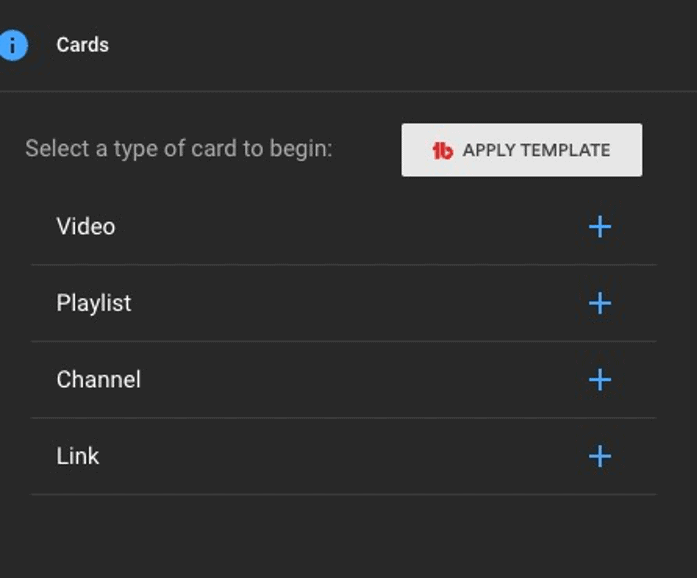You’ve decided to enter the world of podcasting. Welcome to the community!
But have you considered launching a video podcast? It can be a companion to the audio version or you can make the entire production specific to YouTube.
Either way, we’ve got some ideas and tips on how you can find success with your new podcast. Let’s get started.
Why Are You Podcasting?
If you’ve never started a podcast before, you’re in for both a treat and a challenge. It’s a rewarding experience but it’s also a ton of work.
Adding a video podcast to your production is going to increase the workload. Before you go all in, figure out why you are podcasting.
Some reasons to include both audio and video podcasts could include wanting maximum reach and your target audience responds more to video than they do audio.
Launching a video podcast also can maximize your monetization efforts. YouTube offers ad revenue and room in the description for affiliate links as well as sponsors.
For example, a few months back we conducted a basic Podcast interview with marketer Jon Dykstra and gathered a whopping $2,000 in affiliate sales after the show premiered.
I have no doubt that an audio-only show would’ve gathered just a fraction of that!

Let’s get into the ins and outs of what you can do to maximize your reach faster as well as double whamming your money-making strategies.
Decide On Your Setup
Every podcaster has a different setup for their equipment. When you first start out, go with basic equipment like a microphone, headphones, and some sort of audio recording software.
Keep it cheap in the beginning. There’s nothing worse than spending a ton of cash and the project not working out in your favor.
Launching a video podcast is a bit different. Your equipment needs to be strategically placed. There are multiple reasons for this.
You want to capture the best lighting possible. Also, the backdrop matters. What do you want your audience to physically see? It shouldn’t be anything that is going to be distracting to your viewer.
Keep it minimal. Maybe a poster. Some sort of award or credential. It can be visible. But it shouldn’t take away from you or your episode. You wouldn’t believe how much attention something as simple as a small flamingo lamp can get!

Consideration should also be given to your co-hosts if there are any. Are all of you going to be in the same room or will they be in a different place, such as their home or office?
For every co-host that’s in a different location, you should be aware of any backdrop they’re using and how it can affect your show.
Furthermore, how are your co-hosts hardware setups different from yours? If they are using different microphones or any other type of hardware, it can create issues. Ideally, you want to all use the same hardware to make it easier for audio mixing.
Before you start recording, you’ll have to do quite a bit of testing to make sure the levels are even.
As a new podcaster, the process can be frustrating, but don’t let it discourage you. This is all part of becoming a successful podcaster.
Launching a video podcast has one caveat no regular audio-only podcast is going to have. And this is the use of a camera or cameras. Just like with microphones, we recommend every host on the show use the same type.
The placement of cameras is more important than just the backdrop. At any given time during his show, Joe Rogan has four cameras running. One is for him, one for his guest, and two more are used for random tasks.
A video podcast needs to be able to switch back and forth from camera to camera to show the audience who is talking or to show something happening. Or you can make it a split-screen show, where all hosts and guests are seen at all times.
Launching A Video Podcast And YouTube SEO
Most video podcasts are going to be launched on YouTube. The statistics for this platform are staggering. In the US, 74% of adults watch YouTube regularly.
While podcast numbers are growing rapidly, they’re not quite this high. Right now, roughly one-third of the US population listens to at least one podcast per month. You can see how combining forces with the various platforms can create a podcasting Voltron and maximize your reach.
Essentially, YouTube is a search engine for videos. The same way Google is for websites and Pinterest is for images.
Just like with any other search engine, your desired reach is going to depend on your SEO efforts. SEO is an acronym for search engine optimization.
Google owns YouTube and treats its SEO much the same. However, there are some differences.
One of the similarities is the method of typing in a keyword to see what else YouTube suggests in the box created below.

Use this tool to find keywords that are relevant to your podcast episodes. You should find a way to include these keywords in your descriptions and video hashtags.
Another method is to research keywords you want to rank for. Study the videos. How long are they? What are you seeing in their descriptions as far as keywords and other information? What hashtags are they using?
Competitor research is important with any type of SEO. Check out a tool called vidIQ. It’s a Chrome extension that will show the tags and give you other tools to help with competitor research.
Thumbnails And Titles
Thumbnails and titles are key to SEO for YouTube. When launching a video podcast, these tools are used less often but they can dramatically help your videos pop up in relevant feeds and searches.
Adding your keywords to your titles and keywords is easy. It only takes a few extra seconds to add them in.
Canva is a great tool to help build out thumbnails. You can make them in just a few minutes. We suggest making your thumbnails a bit redundant. Try to use the same colors and fonts so people start to associate the visuals of your thumbnails with your YouTube channel.

Ranking Factors
YouTube doesn’t rank channels based upon links like Google does with websites. They have other tools for deciding how to rank videos.
One of them is your clickthrough rate. This ranking factor is all about how many people are clicking on your videos compared to the videos ranked above and below you in the search results for a particular keyword. This is another reason your thumbnails and titles are so important.
Another factor is all about video engagement in the form of subscribers, comments, and likes. When viewers engage your content, it’s a signal to the search engine that your video is being well-received and it should move up in the rankings.
Many creators prefer to ask people to like, comment, and subscribe. But is this necessary anymore?
The answer is “not really”. If people like your content, they’ll do all of this without you asking for it.
Add Cards To Your Video
What about a lowercase “i” you see at the top of the screen? This is another way to add cards to your content.
Here are the different types of cards you can use:
- Channel cards that direct viewers to another channel. Use this option if you own multiple channels.
- Donation cards to encourage fundraising on behalf of U.S. nonprofit organizations. Your content shouldn’t be all take and no give, right?
- Fan funding to ask viewers to support your video content.
- Link cards, which direct viewers to an external site
- Poll cards, which pose a question to viewers and allow them to vote
- Video or playlist cards, which link to other YouTube content
Every one of your videos can have up to five cards.

Another option is going to be adding cards to your end screen. Using this method, you’ll include the YouTube thumbnail to a similar video that belongs to your channel. You can add two cards here for related content.
Promote Your Video Podcast
Nothing is ever as simple as just clicking the publish button. You need to promote your podcast on social sites like Twitter, Facebook, and Instagram. Focus on the platforms where your audience is spending most of their time.
If a particular social site doesn’t perform well, then stop using it.
When it comes to podcasts, the ultimate way to promote is going to be with your YouTube channel and stripping out the audio and posting it on Spotify, iTunes, and even your own website.
Yes, your podcast should have its own website. Every brand has a website and how is your podcast different from any other brand?
On your website, you can host the audio file or YouTube version of your podcast and include show notes as well as a transcription. This practice will improve your SEO with Google and help to get your website ranked for the very keywords your YouTube is going after.
You don’t need to create any other content. But you can place ads and include affiliate links to products within profitable niches to further your monetization efforts just like any other website.
Monetize Your Video Podcast
Traditionally, podcasters make their money from sponsors. How this works is the podcaster will mention the sponsor at some point during the show.
This can be the beginning, the middle, or the end. Shorter podcasts won’t always have an ad from a sponsor in the middle of an episode.
Why do people stand for this kind of ad but get so agitated by other types of ads?
The answer lies in where people listen to podcasts. The majority are listened to while their listeners are driving. This can be a road trip or a daily commute. Many people enjoy listening to their favorite podcasts while they’re working out.
These types of environments keep the hands busy, so skipping through ads isn’t an option. Not to mention 2-3 ads in a longer podcast isn’t that big of a deal and isn’t overly distracting.
This is where having a website and video podcast on YouTube can boost your cash flow.
We’ve already mentioned monetizing on a website. As far as YouTube, what are your options?
You don’t have to completely reshoot the entire episode to take out sponsor ads from your audio-only podcast. People who watch YouTube know they’re going to see ads. They know podcasters have bills to pay and most podcasts at this point are on multiple formats.
Ad revenue is the most well-known way to monetize a video podcast on YouTube. However, there are other methods.
The same sponsors that pay to be on your podcast might pay extra if they know you’re on other channels. Mentioning your sponsor in your description and throwing them a link can only help boost your clout with brands and potential partners.
Affiliate links can also be added to your YouTube description. This can be for the equipment used in the creation of your show as well as other relevant products or services.
Memberships are now available on YouTube. People can pay a monthly fee, set by the channel owner, and have different tiers. To get people to be a member, you’ll need to offer exclusive perks and content they cannot get for free. An alternative to memberships on YouTube could be a Patreon, as it works similarly.
Some Final Thoughts On Launching A Video Podcast
Launching a video podcast is going to be one of the most challenging things you’ve done in your content-creating career.
You’ll need to pay your dues and work your way up the proverbial ladder. If you put our tips into action, you’ll rise through the ranks and set yourself up for success.
If you enjoyed today’s post, check out some more of our content to help your podcast grow.




